
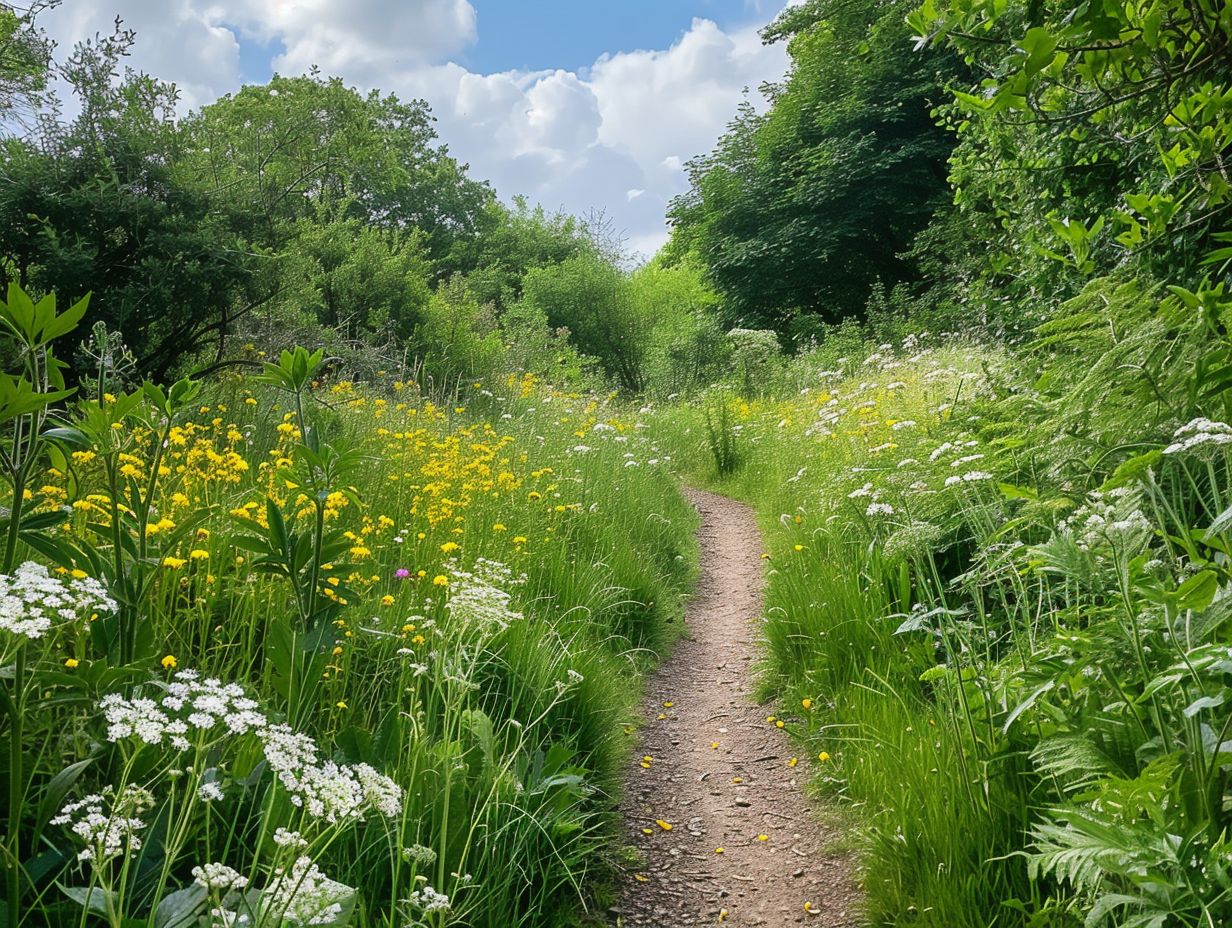
Vaibhav
- Categories: Hiking
Calling all nature lovers and hiking enthusiasts! If you are a botanical enthusiast looking to explore the stunning flora and fauna of the UK, then look no further.
In this article, we have compiled a list of the top hiking trails in the UK that will take you through some of the most beautiful botanical wonders in the country.
From the rugged cliffs of The South West Coast Path to the picturesque landscapes of The Lake District National Park, get ready to immerse yourself in the natural beauty of the UK.
Also, find essential tips on how to hike responsibly and protect the precious botanical treasures along the way. Grab your hiking boots and get ready for an unforgettable adventure!
Key Takeaways:

- The UK offers a diverse range of hiking trails for botanical enthusiasts, including the South West Coast Path, Lake District National Park, and West Highland Way.
- When hiking in the UK, it’s important to be mindful of protecting the botanical wonders by sticking to designated trails, leaving no trace, and respecting plants and wildlife.
- To fully appreciate and understand the flora and fauna of the UK, take the time to educate yourself and others on the different species and the importance of conservation.
Top Hiking Trails for Botanical Enthusiasts in the UK
The exploration of hiking trails tailored for botanical enthusiasts in the UK presents a distinctive fusion of natural beauty and conservation efforts. These trails transcend mere pathways through the wilderness, offering immersive experiences through an array of exceptional plant specimens.
The management of these trails is often overseen by the National Trust and can be found within diverse national parks such as Cairngorms National Park and Loch Lomond.
1. The South West Coast Path
The South West Coast Path provides an awe-inspiring experience characterised by its coastal trails, magnificent scenery, and diverse wildlife, making it an ideal destination for enthusiasts of walking routes.
From the rugged cliffs that offer breathtaking views of the Atlantic Ocean to the tranquil sandy beaches adorned with vibrant seashells, the path showcases a wide array of visual splendours. Hikers have the opportunity to observe lively seals sunbathing, nimble Peregrine falcons gracefully soaring above, and occasionally witness pods of dolphins gracefully frolicking in the waves.
The path is adorned with fragrant wildflowers like sea thrift and pink campion, enhancing the already picturesque landscape. Along the route, botanical gardens highlight rare plant species that are exclusive to this coastal area.
By adhering to the principles of treading lightly and following Leave No Trace guidelines, hikers contribute to the preservation of these delicate ecosystems, ensuring that forthcoming generations can also appreciate the natural beauty of the South West Coast Path.
2. The Lake District National Park
The Lake District National Park is recognised for its picturesque rural landscapes, local produce, and charming villages, making it an appealing destination for nature enthusiasts and hikers.
A distinguishing characteristic of the Lake District is its varied botanical gardens, including the splendid gardens at Rydal Mount. These gardens exhibit a wide array of plant species, ranging from vibrant flowers to rare ferns, offering visitors a serene and informative visit.
Exploring the local markets in villages like Grasmere enhances the hiking experience, enabling hikers to sample delectable treats crafted with fresh, locally procured ingredients. It is imperative to uphold a harmonious equilibrium between tourism and conservation to safeguard the natural and cultural legacy of this captivating region.
3. The West Highland Way
The West Highland Way represents one of Scotland’s premier long-distance hiking trails, offering enthusiasts an immersive experience through majestic mountain ranges, heritage trails, and the opportunity for guided walks.
The trail traverses a variety of landscapes, encompassing notable landmarks such as the towering peak of Ben Nevis, the highest mountain in the British Isles, and the picturesque shores of Loch Lomond.
Throughout the journey, hikers can encounter ancient structures like Kilchurn Castle and geological marvels like the Buachaille Etive Mor. The trail also boasts a rich array of flora, including wildflowers, heather, and rare plant species, which are often highlighted during guided walks to showcase the region’s unique botanical offerings.
Maintaining the ecological and historical integrity of the West Highland Way is of utmost importance in safeguarding these natural and cultural treasures for the benefit of future generations, ensuring that the beauty and significance of the trail endure over time.
4. The Pennine Way
The Pennine Way is renowned for its strenuous long-distance walks, designation as a dark sky reserve, impressive rock formations, and vast rural views.
The trail crosses some of the most remarkable upland landscapes in England, giving walkers the chance to observe distinctive geological features such as limestone pavements, gritstone outcrops, and glacial valleys.
Its dark sky reserve status allows visitors to admire the celestial wonders undisturbed by light pollution. This ecologically diverse environment sustains a variety of plant and animal species, including uncommon bird species like curlews and ring ouzels, highlighting the importance of preserving these habitats for the pleasure of future generations.
5. The Norfolk Coast Path
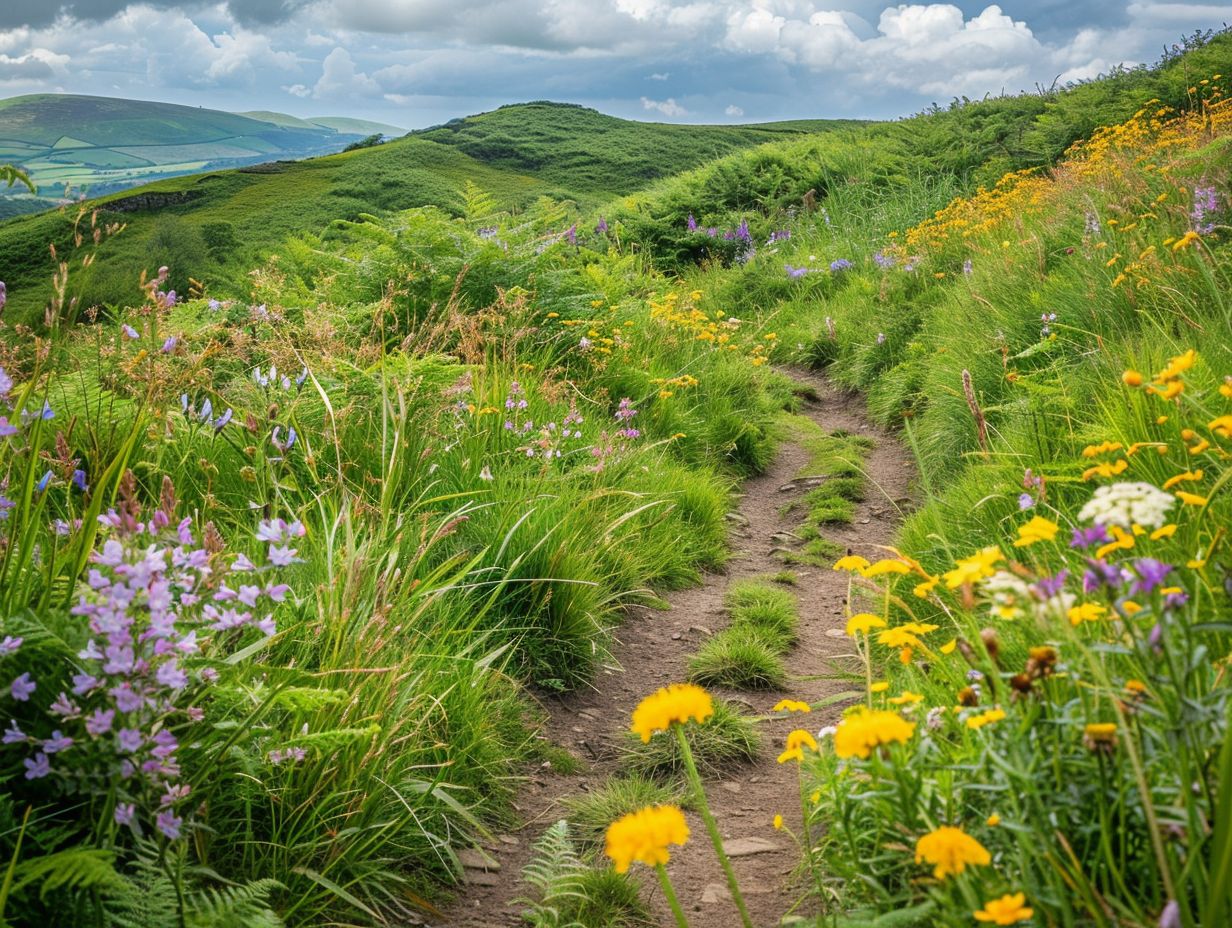
The Norfolk Coast Path provides a distinctive hiking experience with its breathtaking coastal trails, protected wetland areas, diverse wildlife, and picturesque waterways.
Along the Norfolk Coast Path, hikers may have the opportunity to observe a range of noteworthy wildlife species including avocets, seals, oystercatchers, and marsh harriers.
The path serves not only as a sanctuary for wildlife enthusiasts but also plays a significant role in wetland conservation endeavors. These wetland areas are essential for preserving biodiversity and sustaining various ecosystems.
By walking thoughtfully and following the Leave No Trace principles, hikers can contribute to the safeguarding of these delicate habitats and ensure that forthcoming generations can continue to relish the splendor of the Norfolk Coast.
6. The Isle of Skye
The Isle of Skye is widely recognised for its magnificent landscapes, picturesque fishing villages, varied hiking trails, and remarkable geological formations, establishing it as a destination of choice for enthusiasts of hiking activities.
During an exploration of the island, individuals may encounter distinctive geological attractions such as the Old Man of Storr, a remarkable rock pinnacle that presents a striking appearance against the backdrop of the sky.
The Quiraing, characterised by its scenic landslides and rugged cliffs, provides hikers with awe-inspiring panoramas of the surrounding terrain.
Additionally, Skye boasts the Fairy Pools, which consist of clear pools fed by cascading waterfalls, creating a whimsical ambience suitable for a leisurely stroll.
Enthusiasts of botany can immerse themselves in the Skye Botanic Garden, which showcases a diverse collection of plant species indigenous to the island, thereby fostering the conservation of its natural splendour and cultural legacy.
7. The Pembrokeshire Coast Path
The Pembrokeshire Coast Path presents hikers with awe-inspiring coastal trails, magnificent scenery, abundant wildlife, and an assortment of walking routes.
The trail offers a rich array of wildlife sightings, including Atlantic grey seals, dolphins, and various seabirds gliding overhead. Furthermore, the path showcases distinctive plant species such as the rare purple-loosestrife and vibrant sea thrift. Enthusiasts of botany will find delight in the charming botanical gardens scattered along the trail.
Preservation endeavours play a crucial role in safeguarding the natural allure of this coastal treasure. Hikers can contribute to this cause by adhering to designated paths, showing respect for wildlife habitats, and actively engaging in beach clean-up initiatives.
8. The Yorkshire Dales National Park
The Yorkshire Dales National Park is renowned for its picturesque rural landscapes, locally sourced products, and charming villages, making it an ideal destination for hiking and botanical exploration.
Within the park, there is a wide variety of flora and fauna, including vibrant wildflowers such as bluebells, primroses, and heather that adorn the meadows. Additionally, visitors have the opportunity to discover rare orchids and ferns hidden in secluded areas.
Whilst traversing the park’s trails, the tranquil atmosphere is enhanced by the soothing sounds of babbling streams and cascading waterfalls. The region’s specialty cheese and craft beer provide a delectable taste of Yorkshire, and the quaint villages of Grassington and Malham offer comfortable lodgings and a glimpse into the area’s rich historical background.
It is imperative to prioritize the conservation of the Yorkshire Dales’ natural splendor and cultural legacy to ensure that future generations can revel in its captivating landscapes.
9. The Peak District National Park
The Peak District National Park is renowned for its striking mountain ranges, abundant heritage trails, and remarkable rock formations, establishing it as a sanctuary for hiking enthusiasts and nature lovers.
Within the Peak District, the trails present a varied array of landscapes, ranging from the rugged splendour of Kinder Scout to the picturesque panoramas of Mam Tor. Along these paths, hikers may encounter distinctive botanical wonders such as rare orchids and ancient woodlands.
Additionally, heritage trails wind through historic locations like the evocative ruins of Peveril Castle and the ancient stone circles, offering a glimpse into the region’s history. Preservation efforts are of utmost importance in maintaining the delicate equilibrium of plant life, wildlife, and historical riches within this breathtaking national park.
10. The Scottish Highlands
The Scottish Highlands provide an exceptional hiking experience characterised by breathtaking landscapes, rich biodiversity, majestic mountain ranges, and the availability of guided hiking opportunities.
These rugged terrains harbour a diverse array of emblematic species such as red deer, golden eagles, and red squirrels, enhancing the allure of exploring the area on foot.
Among the well-known hiking routes in the Highlands are the West Highland Way, Ben Nevis, and the Isle of Skye. Engaging in guided walks not only ensures a safer and more educational journey but also enables participants to gain insights into the unique plant and animal life indigenous to this region.
The preservation of the natural beauty and cultural heritage of the Scottish Highlands is paramount in upholding its enduring appeal for future generations.
Tips for Hiking and Protecting the Botanical Wonders of the UK
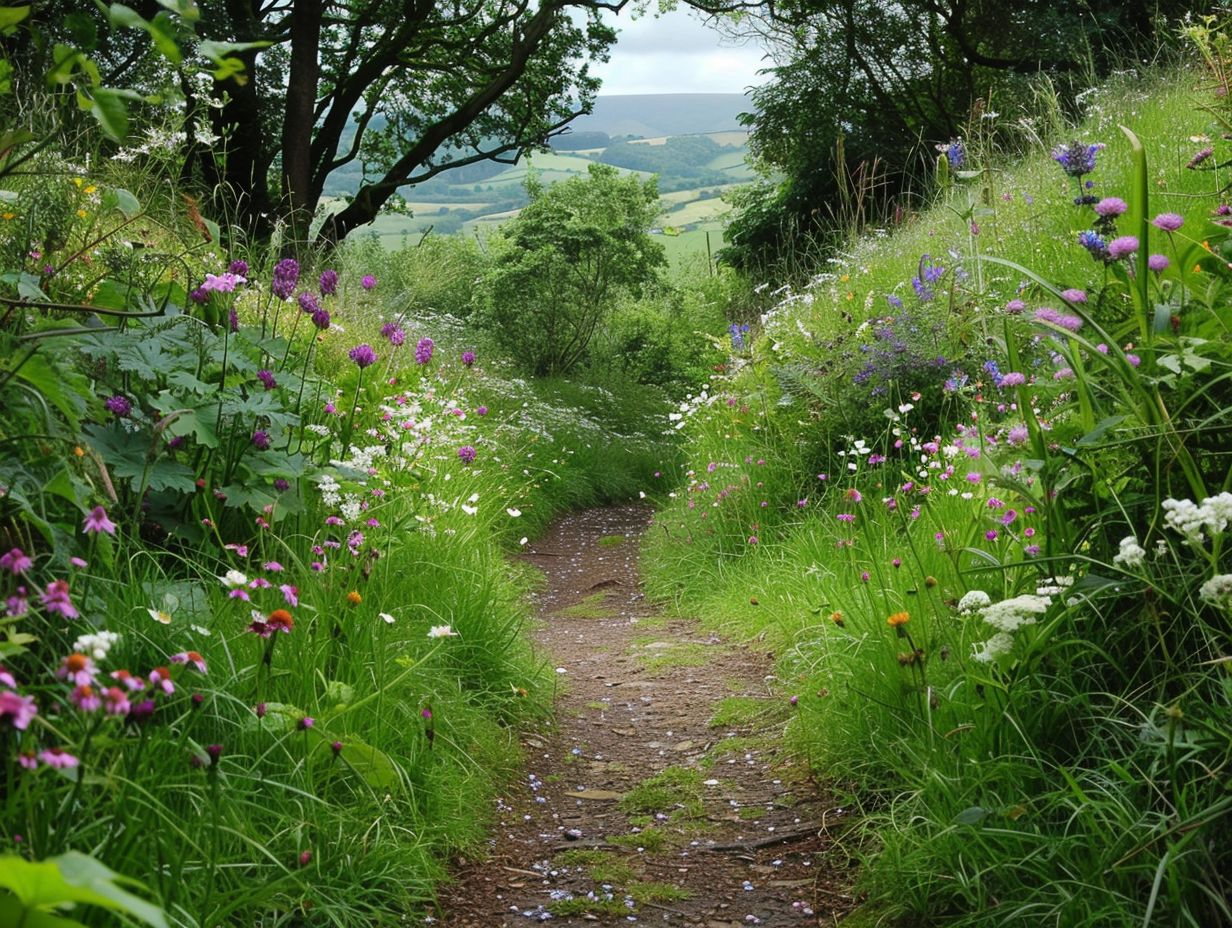
Exploring the botanical marvels of the United Kingdom demands more than just an admiration for their beauty; it necessitates a dedication to plant conservation and active engagement in conservation efforts, particularly within the various national parks.
1. Stick to the Designated Trails
Adhering to designated trails is essential for the protection of delicate ecosystems, which include protected marshes and other footpaths, thereby facilitating the continuation of conservation efforts.
When hikers deviate from established trails, they inadvertently trample on fragile vegetation, disrupt wildlife habitats, and contribute to erosion. Locations such as national parks, nature reserves, and wildlife sanctuaries have predetermined trails in place to ensure minimal environmental impact.
For example, within the confines of the Grand Canyon, veering from designated paths can lead to irreversible damage to the nearby natural beauty. The success of conservation initiatives relies on the responsible behaviour of hikers in maintaining the balance between human enjoyment and the preservation of the environment in these areas.
2. Leave No Trace
Adhering to the principle of Leave No Trace is crucial for the preservation of wildlife and rural landscapes, as well as for supporting conservation efforts. Proper waste disposal by individuals plays a key role in preventing pollution and upholding environmental cleanliness.
The reduction of campfire impact aids in the preservation of vegetation and the prevention of forest fires, thereby safeguarding the ecosystem’s integrity.
Demonstrating respect for wildlife through maintaining a safe distance and refraining from disturbing their habitats fosters a balanced coexistence between humans and animals.
These conscientious practices serve to not only safeguard natural environments but also contribute to the sustainability of ecosystems, ensuring they remain accessible for enjoyment by future generations.
3. Respect the Plants and Wildlife
It is essential to demonstrate respect towards the plants and wildlife inhabiting natural areas in order to preserve the botanical treasures and support ongoing conservation endeavours.
Engaging with nature can provide a fulfilling and enriching experience; however, it is imperative to do so with a sense of responsibility. One of the fundamental principles to adhere to is refraining from the collection of plants or the disturbance of animals.
By refraining from intervening with these components, ecosystems are allowed to flourish and sustain their intricate equilibrium. Such practices contribute to the preservation of biodiversity, ensuring the harmonious coexistence of diverse species. This approach not only safeguards the intrinsic beauty of these environments but also plays a significant role in global conservation initiatives.
4. Educate Yourself and Others
Enhancing one’s hiking experience and fostering a deeper appreciation for local heritage and traditions can be achieved through educational initiatives such as guided walks and heritage trails when exploring different areas.
By actively engaging with the environment and looking into the botanical, zoological, and historical aspects of the terrain, individuals can establish a stronger bond with nature while simultaneously developing a heightened reverence for the natural world.
Guided walks, led by experts well-versed in the local ecosystem and historical narratives, offer invaluable insights into the dynamic relationships within the environment and the captivating tales associated with regional landmarks.
Disseminating this knowledge among fellow hikers not only enriches their journey but also serves as a pivotal instrument in advancing conservation endeavours and instilling a sense of duty towards safeguarding these natural wonders for forthcoming generations.
Frequently Asked Questions
1. Which hiking trails in the UK are best for botanical enthusiasts?
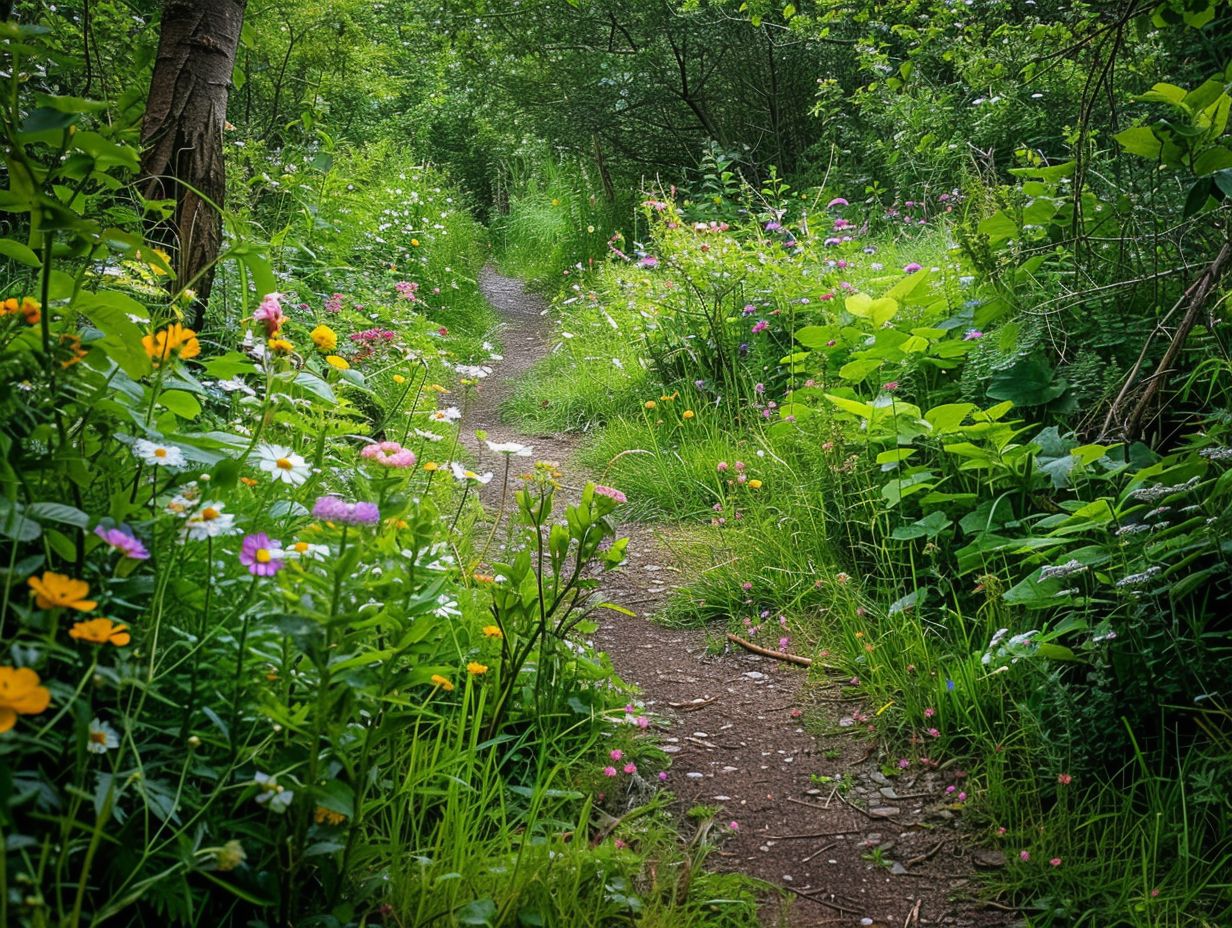
The UK has many hiking trails that offer beautiful views of nature and diverse flora. However, some of the best hiking trails for botanical enthusiasts include the South West Coast Path, Glyndwr’s Way, and the Pennine Way.
2. What makes these hiking trails ideal for botanical enthusiasts?
These hiking trails have a diverse range of plant species, including rare and unique ones. They also have designated botanical gardens and nature reserves along the way, providing opportunities for further exploration and learning.
3. Are there any specific times of the year that are best for hiking these trails for botanical enthusiasts?
The best time to hike these trails for botanical enthusiasts is during the spring and summer months. This is when the plants are in full bloom, and you can see a wide variety of flowers and foliage.
4. Are there any guided tours available for these hiking trails?
Yes, many tour companies offer guided hikes on these trails specifically for botanical enthusiasts. These guided tours provide valuable information about the different plant species and their habitats.
5. Can these hiking trails be challenging for beginners?
Some of these trails can be challenging, particularly for beginners, as they involve long distances and steep inclines. However, there are also shorter and easier sections that beginners can explore without difficulty.
6. Are there any safety precautions to keep in mind while hiking these trails?
It is essential to be prepared for the weather and terrain while hiking these trails. Make sure to wear appropriate clothing and footwear, carry enough water and snacks, and stay on designated paths. It is also advisable to inform someone of your hiking plans and carry a map or GPS device for navigation.
Share:
By submitting your email address, you are agreeing to receive marketing emails from theexpertcamper.co.uk.
We’ll never share your email address and you can unsubscribe at any time. Privacy policy
Related Posts
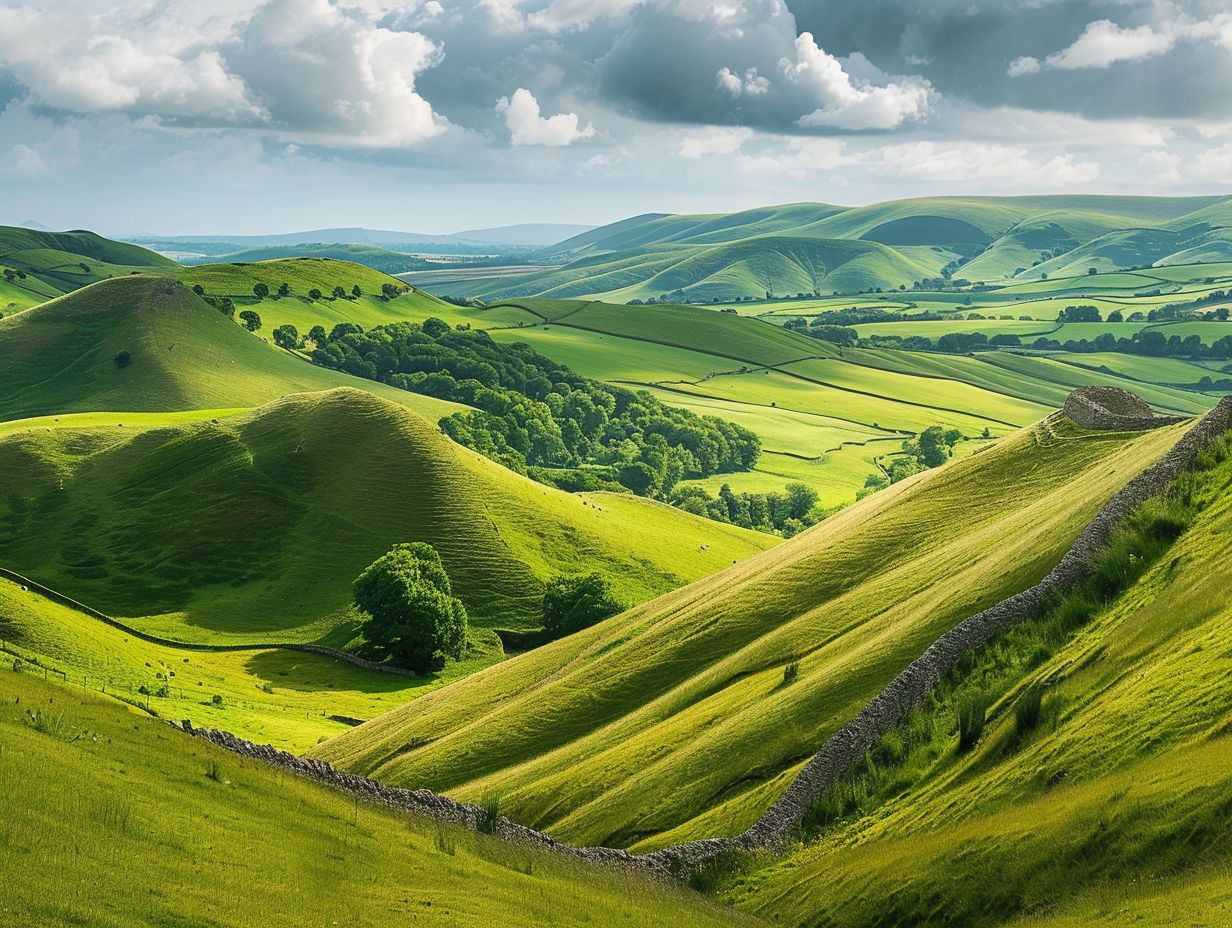
A Seasonal Guide To Hiking In The Peak District
Are you ready to lace up your hiking boots and explore the stunning landscapes of the Peak District? This seasonal guide will take you through

Hiking Challenges Preparing For Your First Ultrahike
Are you ready to take your hiking adventures to the next level? Ultra-hiking offers a unique combination of physical and mental challenges, breathtaking scenery, and

Ecofriendly Hiking Tips For Sustainable Adventures
Are you an outdoor enthusiast looking to minimise your impact on the environment while enjoying the great outdoors? Eco-friendly hiking is the perfect solution! We
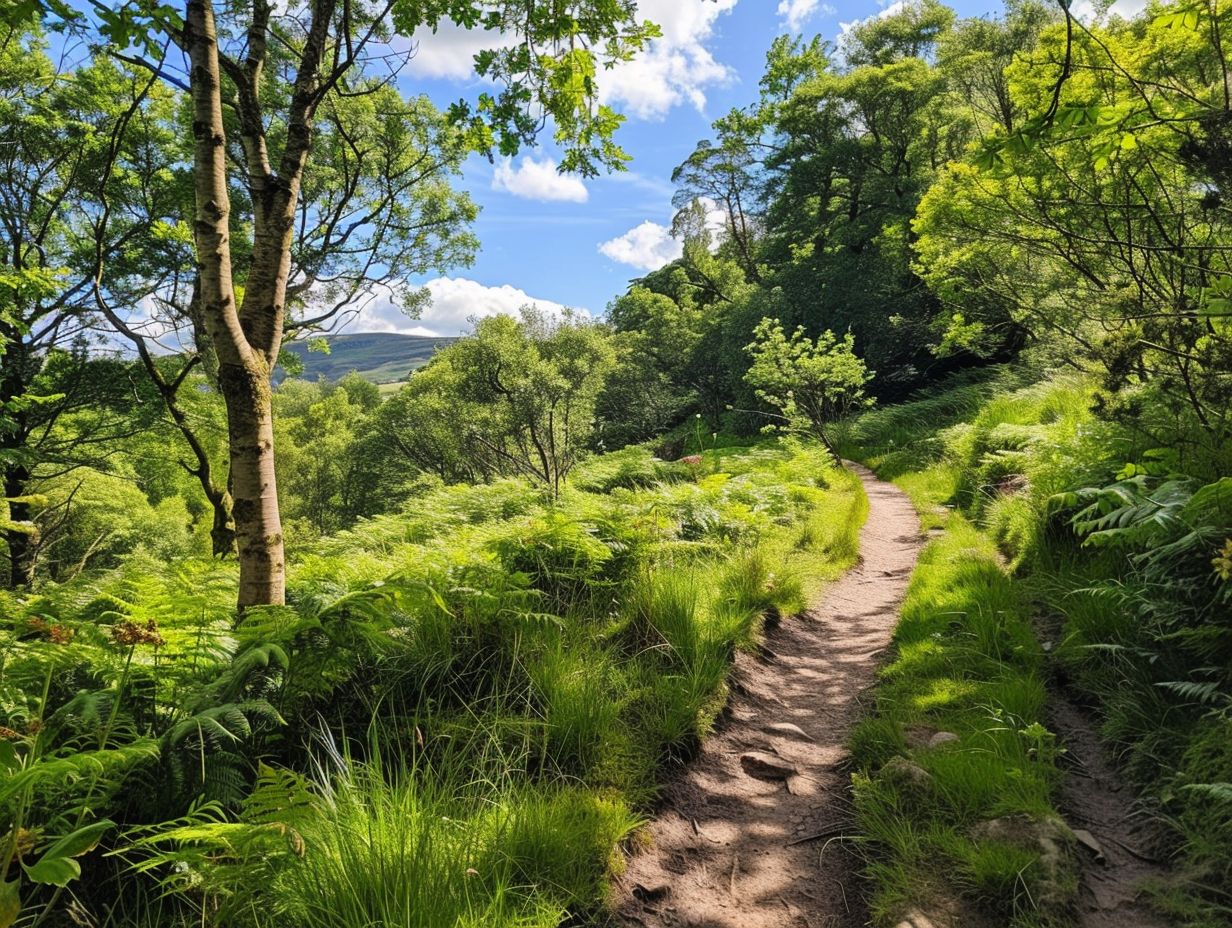
The Best Hiking Trails For Experiencing UK Wildlife
When exploring the picturesque hiking trails of the UK, you can expect to encounter a diverse array of wildlife. From majestic birds soaring overhead to

Wildflower Walks The Best Trails For Nature Lovers
Are you a nature lover looking to embark on a wildflower walk? Explore the best trails for wildflower walks, including [Trail Name 1], [Trail Name
























